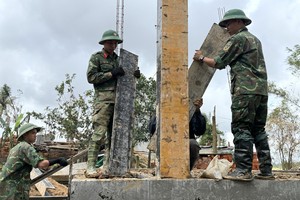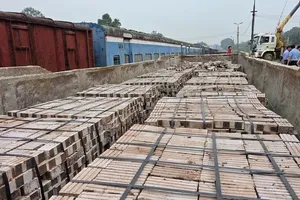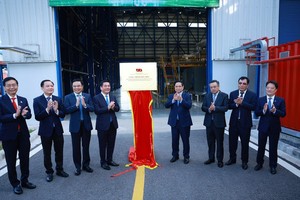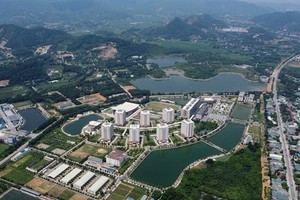Witnesses reported that the bridge suddenly gave way, with people and vehicles crossing at the time of the collapse.
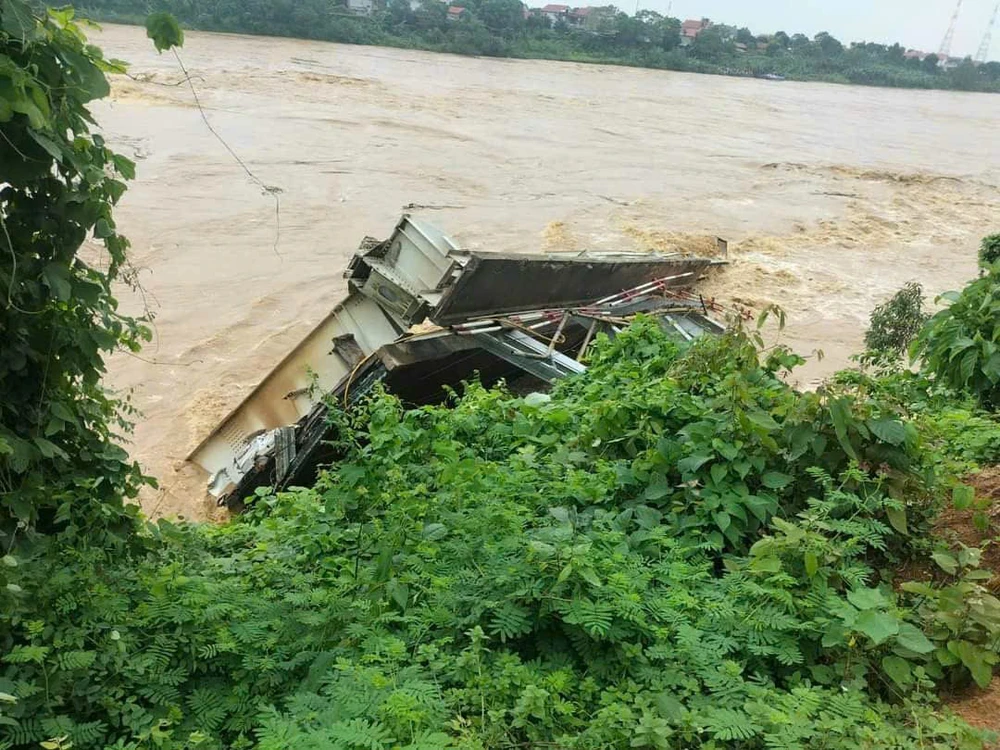


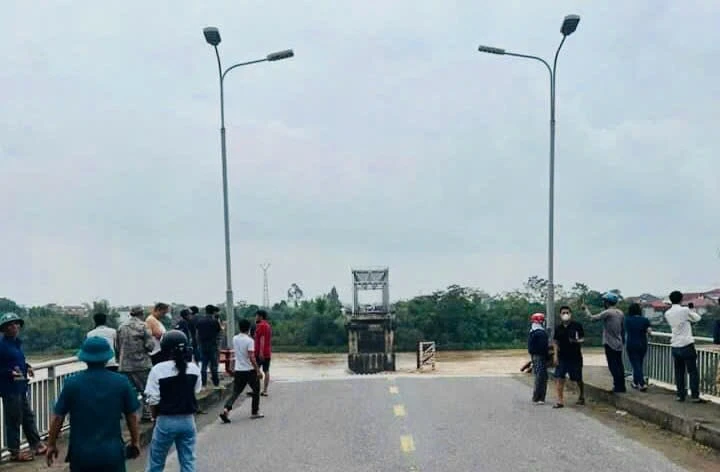


Phong Chau Bridge, located at Km18+300 on National Highway 32C, has been in use for over 20 years. The bridge was a steel truss structure, 375.36 meters long, and was inaugurated on July 28, 1995.
On the same morning, officials from Tam Nong District in Phu Tho Province reported that rescue operations were underway following the collapse. Before the incident, vehicles, including cars and motorcycles, were still allowed to cross the bridge.
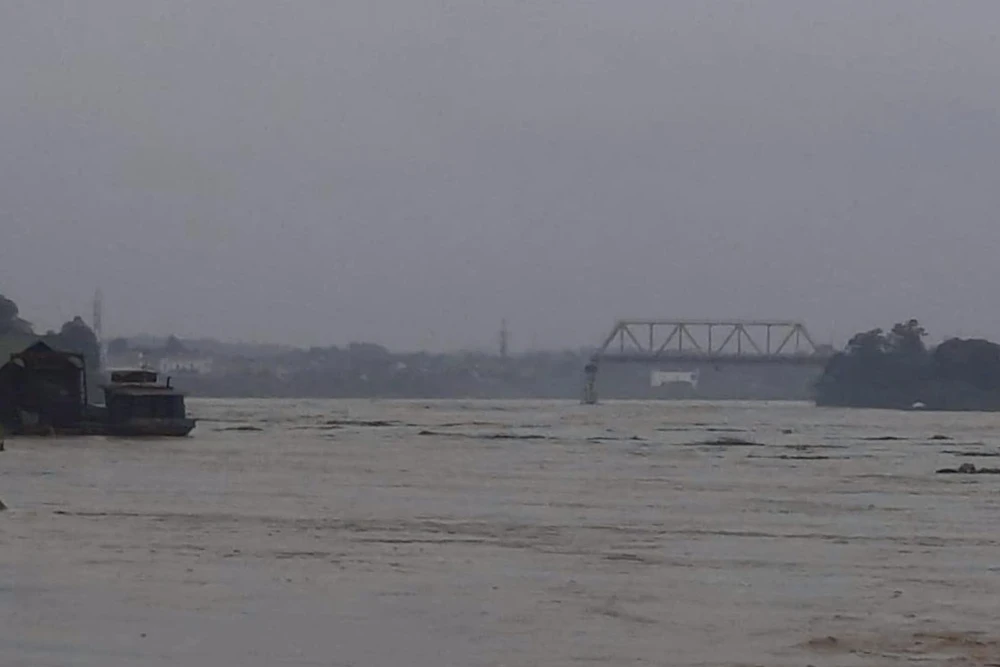
As of now, the extent of the human and property damage has not been identified. Due to the strong currents, emergency measures are being taken for search and rescue.
By 11 a.m. on September 9, provincial leaders and Colonel Nguyen Minh Tuan, Director of the Provincial Police, arrived at the scene to supervise the rescue efforts. The authorities have not yet assessed the damage to people and vehicles.
In related news, heavy rainfall in the aftermath of Typhoon Yagi has triggered severe flooding in Tien Yen District, Quang Ninh Province.
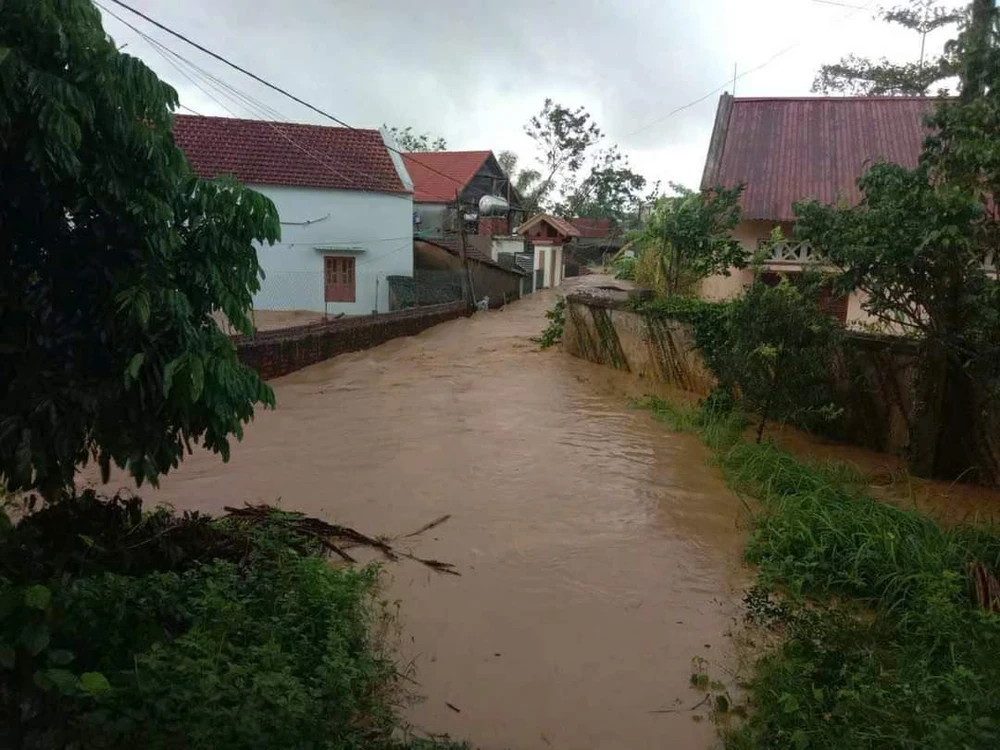
The flooding has significantly impacted residents' lives in several areas. Local authorities are currently focusing on evacuating residents.
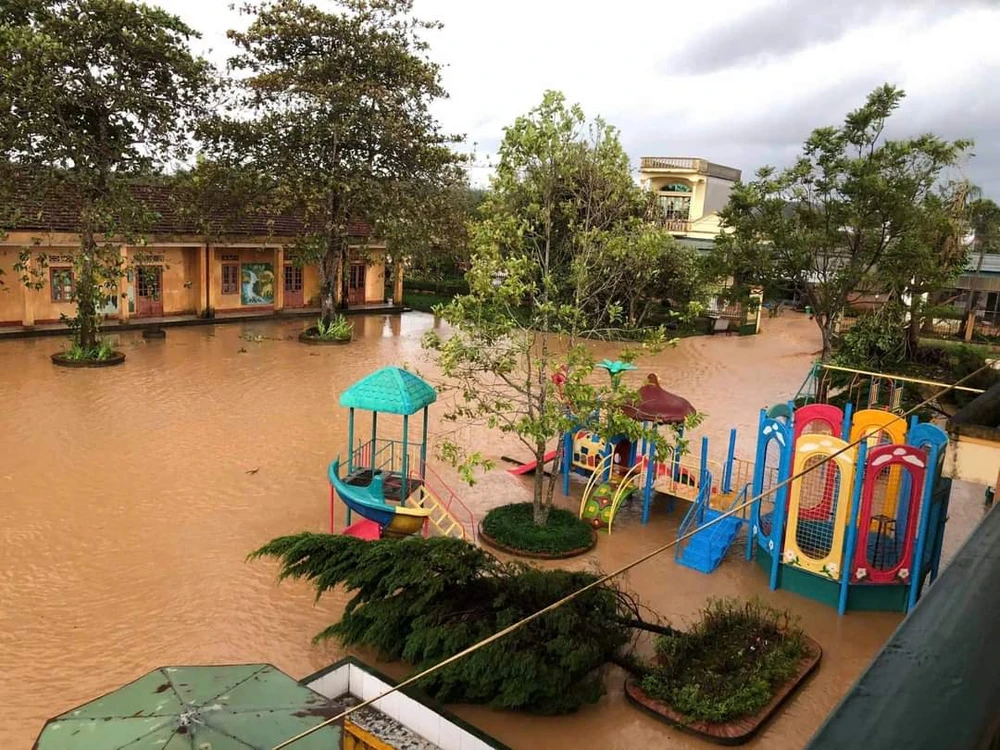
Due to the impact of heavy rains in the aftermath of Typhoon Yagi, floodwaters in the Tien Yen River rose significantly.
In Quang Ninh, the storm resulted in 249 houses being damaged, with 6 completely losing their roofs and 243 suffering partial roof damage. Additionally, 210 hectares of rice and crops were flooded, over 3,000 forestry trees were broken, and approximately 40 high-voltage power and telecommunication poles were damaged. Over 3,100 trees were also toppled, and many advertising signs, lighting fixtures, and decorative lights were broken. The total estimated damage amounts to over VND373 billion.
Regarding human casualties, there have been 26 deaths and missing persons, an increase of seven compared to the report on September 7. The breakdown includes nine people who died due to the storm, 12 due to landslides and flash floods, and five due to river flooding.
As of the morning of September 9, the Vietnam Disaster and Dyke Management Authority has updated the damage report from Typhoon Yagi. The figures for casualties and property damage have significantly increased from previous reports.

The provinces with reported deaths and missing persons are as follows: Lao Cai (six people), Quang Ninh (six people, including two soldiers and police officers), Hai Phong (two people), Hai Duong (one person), Hanoi (one person), Hoa Binh (four people), Yen Bai (one person), Lang Son (two people), Bac Giang (one person), and Tuyen Quang (two people).
The number of injured individuals has risen to 247, an increase of 61 compared to the report on September 7. The provinces with the highest number of injuries are Quang Ninh (157 people), Hai Phong (40 people), and Hanoi (10 people).
Regarding agricultural damage, Typhoon Yagi has caused flooding and damage to 113,593 hectares of rice fields, mainly in Hai Phong, Thai Binh, Hanoi, Hung Yen, Hai Duong, Ha Nam, Lang Son, Bac Giang, Bac Ninh, and Vinh Phuc. Additionally, 22,047 hectares of crops, 6,887 hectares of fruit trees, and 121,668 trees have been damaged or fallen.
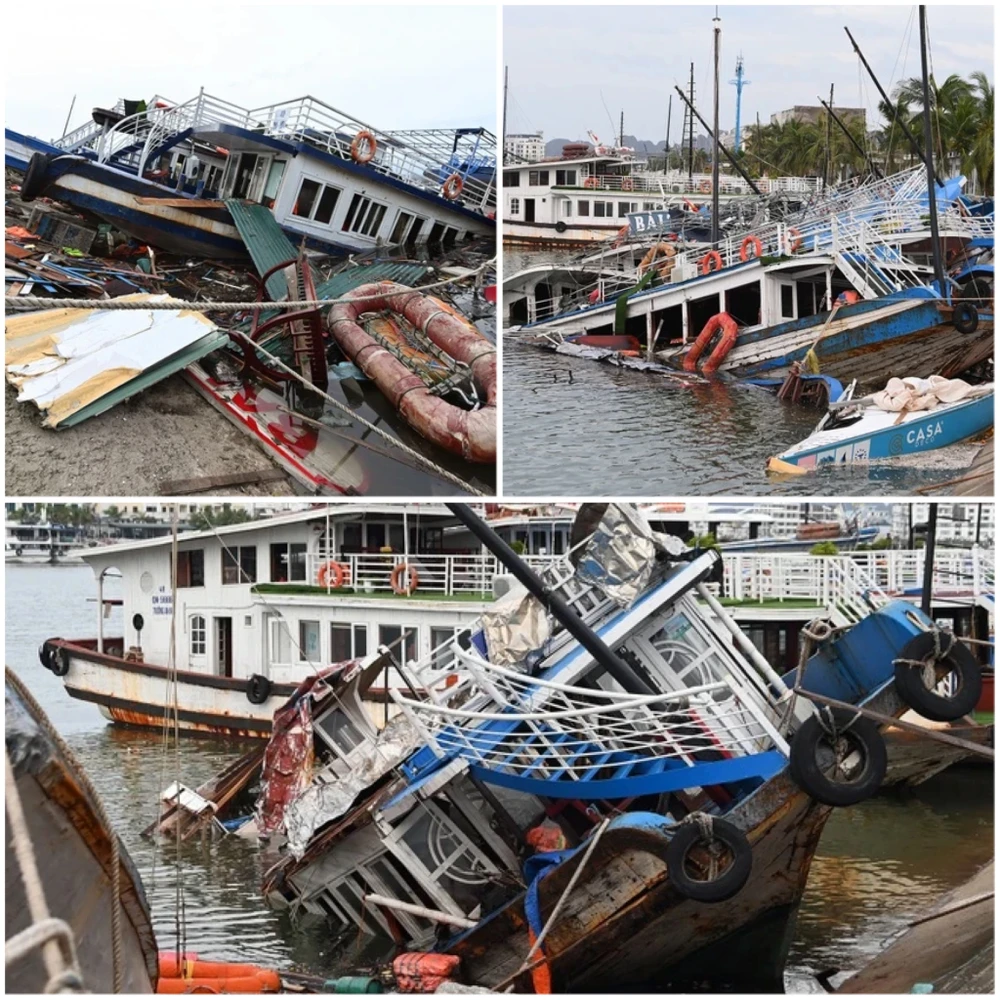
The typhoon has also impacted the fisheries sector, with over 1,500 fish farming cages damaged or swept away, primarily in Quang Ninh and Hai Duong. Moreover, 79 livestock and 190,131 poultry have been killed, with the majority of losses occurring in Hai Duong.
Infrastructure damage includes the sinking of 25 boats at anchor in Quang Ninh. Widespread power outages and communication disruptions have been reported in Quang Ninh, Hai Phong, Thai Binh, Hai Duong, and Hanoi. Many power lines and low-voltage poles have been damaged or toppled.
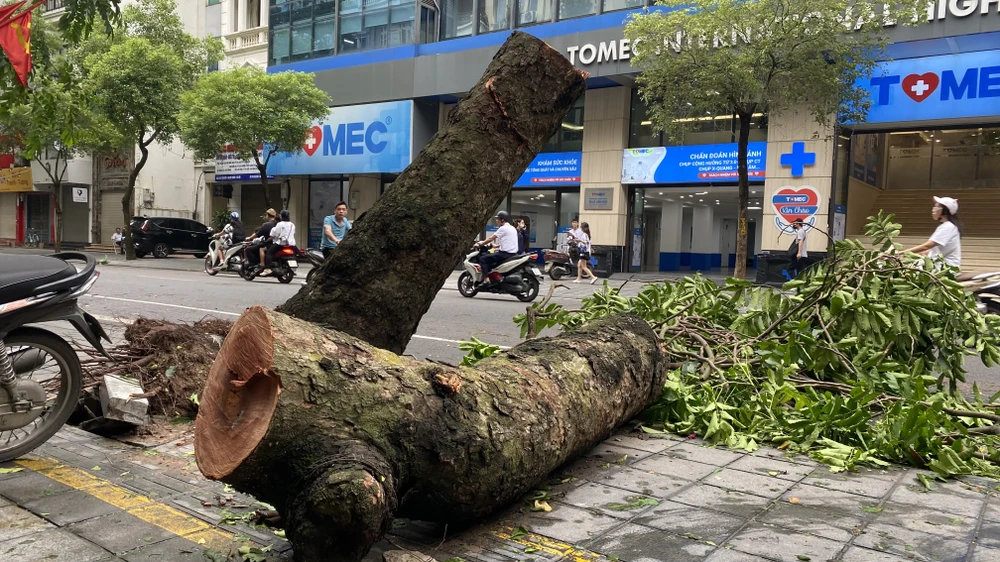
More than 9,851 houses have been destroyed, along with numerous shops, offices, and schools experiencing significant roof damage and structural impairments.
In Quang Ninh, Hai Phong, Hai Duong, and Hanoi, urban trees have been uprooted and fallen massively. Many advertising signs, telecommunication poles, and mobile signal towers have also been damaged or toppled.
Local authorities continue to assess and tally the damage to devise prompt repair and support measures.














